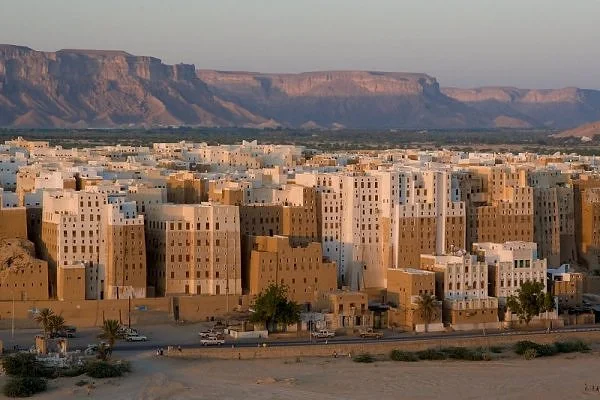When the Palestinian people began to rebuild after Operation Cast Lead there was buzz about mud houses. I visualized primitive mud huts such as were used in forest groups in remote Africa. But I was wrong, the houses being built were beautiful, sturdy and could be made without necessitating materials that Israel was not allowing into Palestine.
Yesterday I found photos of Shibam, the Manhattan of mud buildings in Yemen.
It has stood for thousands of years and is still home to thousands. Absolutely fascinating.
Other recent threats have proven less predictable. In 2009, a suicide bombing blamed on al Qaeda killed four South Korean tourists and left several others wounded. Such tragedies aside, unless a major catastrophe befalls Shibam, this UNESCO world heritage site will remain one of the earliest and best examples of urban planning based on vertical construction – and the pinnacle of what building in clay can bring.
They houses needed to be rebuilt over the centuries. Rain and erosion have been constant threats to the buildings here. To protect their homes, residents must thickly coat the facades and roofs with sealant, and ensure they are maintained and regularly renovated.
The urban planning is such that the streets are too narrow for traffic to pass through, though it seems the lack of cars does not adversely affect Shibam’s 7,000 or so inhabitants who are content with the peace and lack of pollution this provides. The tightly packed nature of the houses also means that from a distance they appear as one block – a fortified design that made attackers think twice.
Twenty years ago Shibam was in danger of becoming a ghost town as residents left in search of an easier life, but the city was saved from crumbling away by restoration and urban development programmes. Meanwhile, as recently as 2008, serious floods struck following tropical storms, with flood waters undermining the foundations of many of the buildings and leading to their collapse.
Some might assume it to be a mirage. Rising out of the desert in the South Arabian Peninsula, ancient high-rise apartment buildings made of mud meet the eye. Centuries before the modern age of skyscrapers dawned in Chicago and New York, the Middle East had its own skyscraper city ~ the oldest on earth. This is Shibam in Yemen, a place thought to have existed since the 2nd century AD.
Constructed out of mud bricks made from local clay, around 500 of Shibam’s buildings are tower houses standing between and 5 and 11 storeys tall. These are the tallest mud buildings in the world, some of them soaring over 100 feet high. Like the fortified wall that surrounds this fortress city, the building practice was employed to protect inhabitants from attacks by marauding Bedouin tribes.
Shibam has been around for approximately 2000 years, but is sometimes considered a 16th century city, as this is the period from which most of its houses originate. However, like all cities it has changed like a living organism and its houses have been rebuilt over and over again during the last few centuries.









Incredible handiwork and astonishing architectural brilliance !
ReplyDeleteWonderful buildings inside and outside.
ReplyDelete